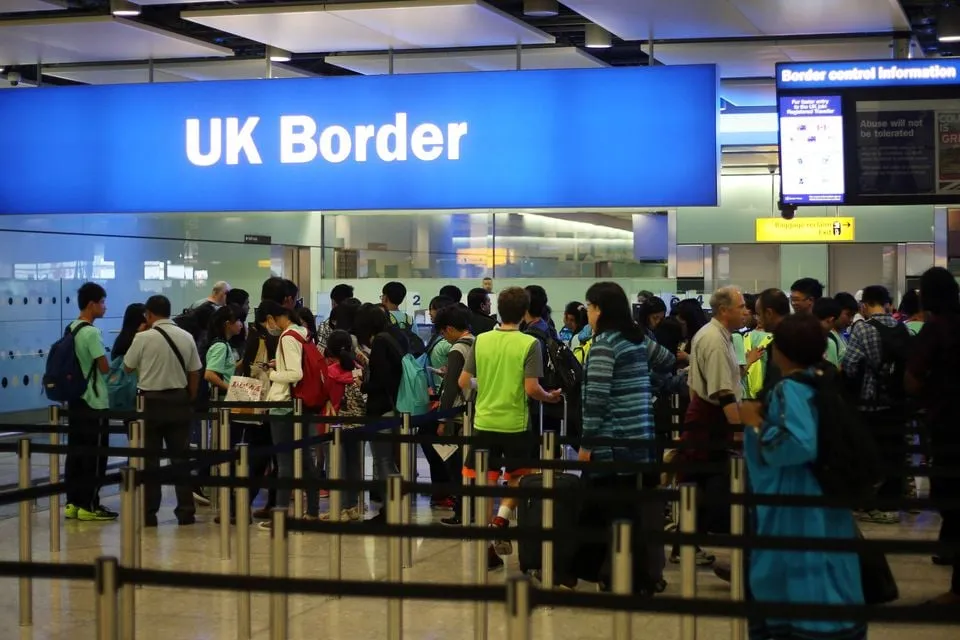Politics
The UK’s New Immigration Policy and Economic Competitiveness

The United Kingdom’s new immigration framework, introduced in late 2025, is reshaping the country’s economic landscape as policymakers attempt to strike a balance between labor market needs and public sentiment. The updated system emphasizes a skills-first approach, tighter border management, and targeted pathways for sectors facing chronic shortages.
Officials describe the reforms as a modernization effort designed to ensure that migration directly supports productivity, innovation, and fiscal sustainability. The Home Office expects the updated policy to enhance workforce flexibility while maintaining national control over entry thresholds.
Skilled Workforce at the Core of Economic Strategy
The restructured immigration policy prioritizes high-skill sectors such as healthcare, technology, engineering, and renewable energy. The points-based visa system has been adjusted to favor candidates with advanced qualifications, English proficiency, and job offers in designated shortage occupations.
Employers are also encouraged to invest in domestic training programs to complement international recruitment. Government data shows that nearly 38 percent of work visas granted in 2025 were for roles related to digital industries and clean energy, both considered essential for long-term economic transformation.
Impact on the Labor Market and Productivity
Businesses across the United Kingdom have welcomed the reforms, citing the need for skilled migration to address labor gaps left by an aging workforce and reduced European inflows post-Brexit. The manufacturing and logistics sectors have also benefited from streamlined sponsorship procedures and faster application processing times.
Economists note that these measures could add 0.6 percent to GDP growth over the next three years if implemented effectively. However, concerns remain about potential inequalities between high-skill and low-wage workers, particularly in service industries that rely heavily on migrant labor.
Technology and Data in Border Management
The government has introduced digital border systems to enhance transparency and efficiency in visa processing. Biometric identification, AI-assisted screening, and real-time data analytics are now central to immigration control.
The system aims to reduce administrative delays while strengthening security. Analysts say these technological upgrades represent a shift from reactive to predictive border management, aligning with broader digital transformation goals across UK public services.
Universities and Innovation Ecosystems Benefit
Higher education institutions have been among the main beneficiaries of the new policy. The Graduate Route visa, allowing foreign students to work for up to two years after completing their studies, remains a cornerstone of Britain’s academic and innovation ecosystem.
Universities report that applications from international students have risen by 12 percent in 2025, driven by the appeal of post-study employment options in fields such as artificial intelligence, biotechnology, and financial engineering. Policymakers view this as critical for retaining top global talent and fostering innovation-led growth.
Challenges in Low Wage Sectors
While the reforms have strengthened Britain’s appeal to skilled professionals, industries such as agriculture, hospitality, and care continue to experience labor shortages. The seasonal worker program, expanded in 2024, remains a temporary solution but does not fully address structural dependencies.
Experts suggest that without sustainable domestic recruitment strategies and improved working conditions, the UK could face long-term pressures in essential low-wage sectors. The government’s Migration Advisory Committee is reviewing potential pathways to balance economic efficiency with labor fairness.
Political Debate and Public Sentiment
Immigration remains a politically charged topic in the United Kingdom. Public opinion surveys indicate a nuanced divide: a majority of citizens support skilled migration, while concerns persist over housing, infrastructure, and wage competition.
Opposition parties argue that the government’s policies risk excluding valuable lower-income workers, while the business community emphasizes the importance of maintaining openness to sustain competitiveness. The debate reflects the broader challenge of reconciling economic priorities with social cohesion.
International Competitiveness and Bilateral Agreements
London is pursuing new migration partnerships with strategic allies to facilitate mobility in innovation-driven sectors. Agreements with countries including Canada, India, and Singapore are designed to promote reciprocal exchanges of skilled workers and researchers.
These initiatives are part of the government’s effort to position the United Kingdom as a hub for global talent, ensuring that immigration policy aligns with trade, education, and technology objectives. Analysts believe that expanding these bilateral pathways could strengthen Britain’s competitiveness in a rapidly evolving global labor market.
Balancing Growth and Public Confidence
The success of the immigration reforms will depend on transparent implementation and measurable economic outcomes. Policymakers emphasize that the new system must not only address labor shortages but also maintain public trust in fair and efficient governance.
If the current trajectory continues, the UK could consolidate its reputation as both a secure and opportunity-rich destination for global talent. Achieving this balance will define the country’s ability to sustain growth, innovation, and competitiveness through 2026 and beyond.












